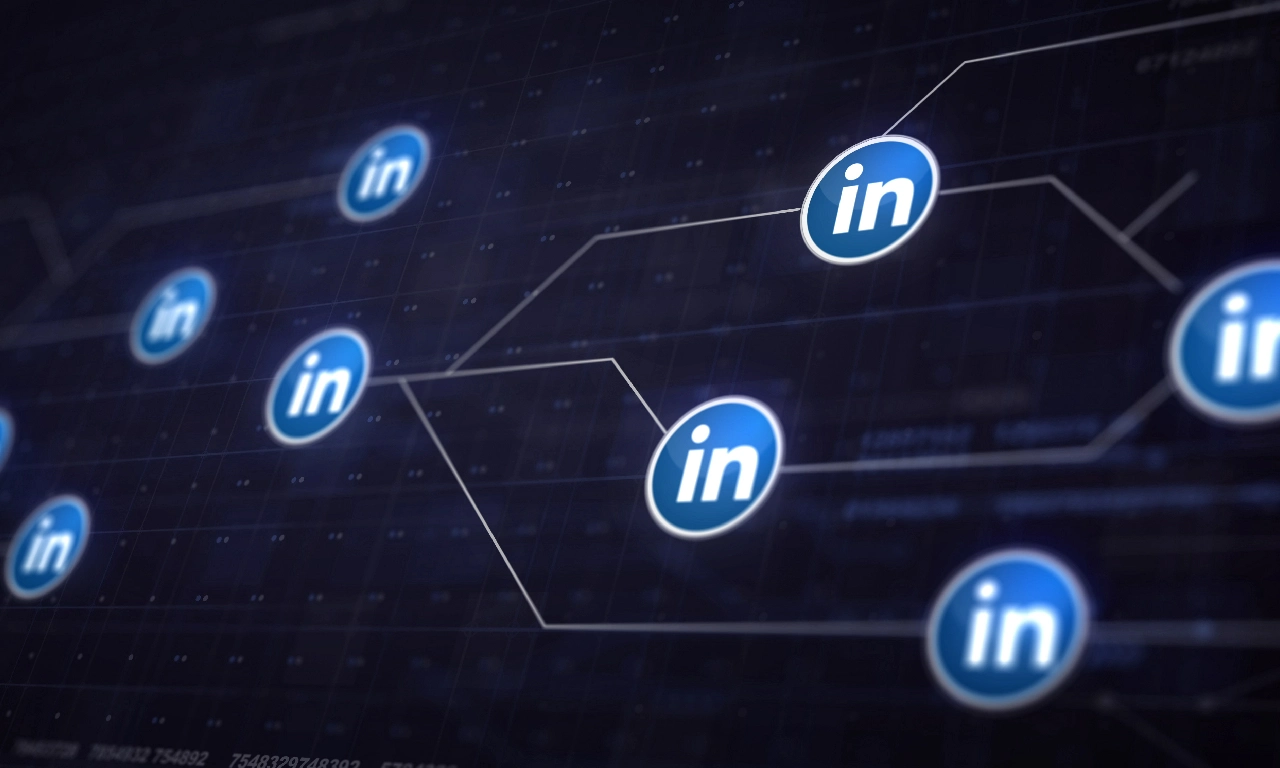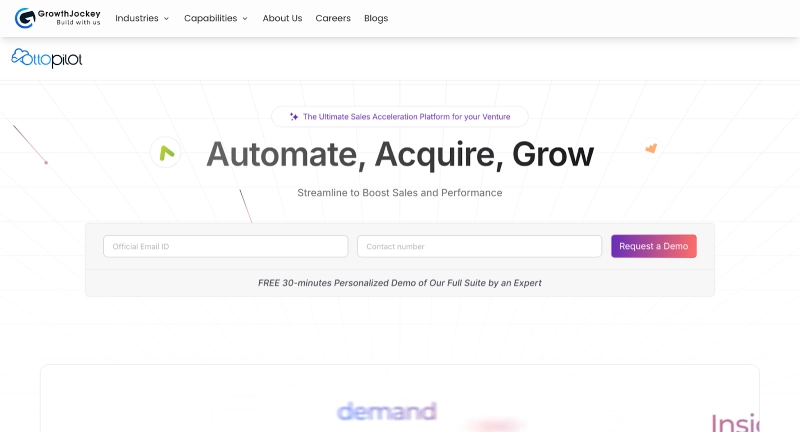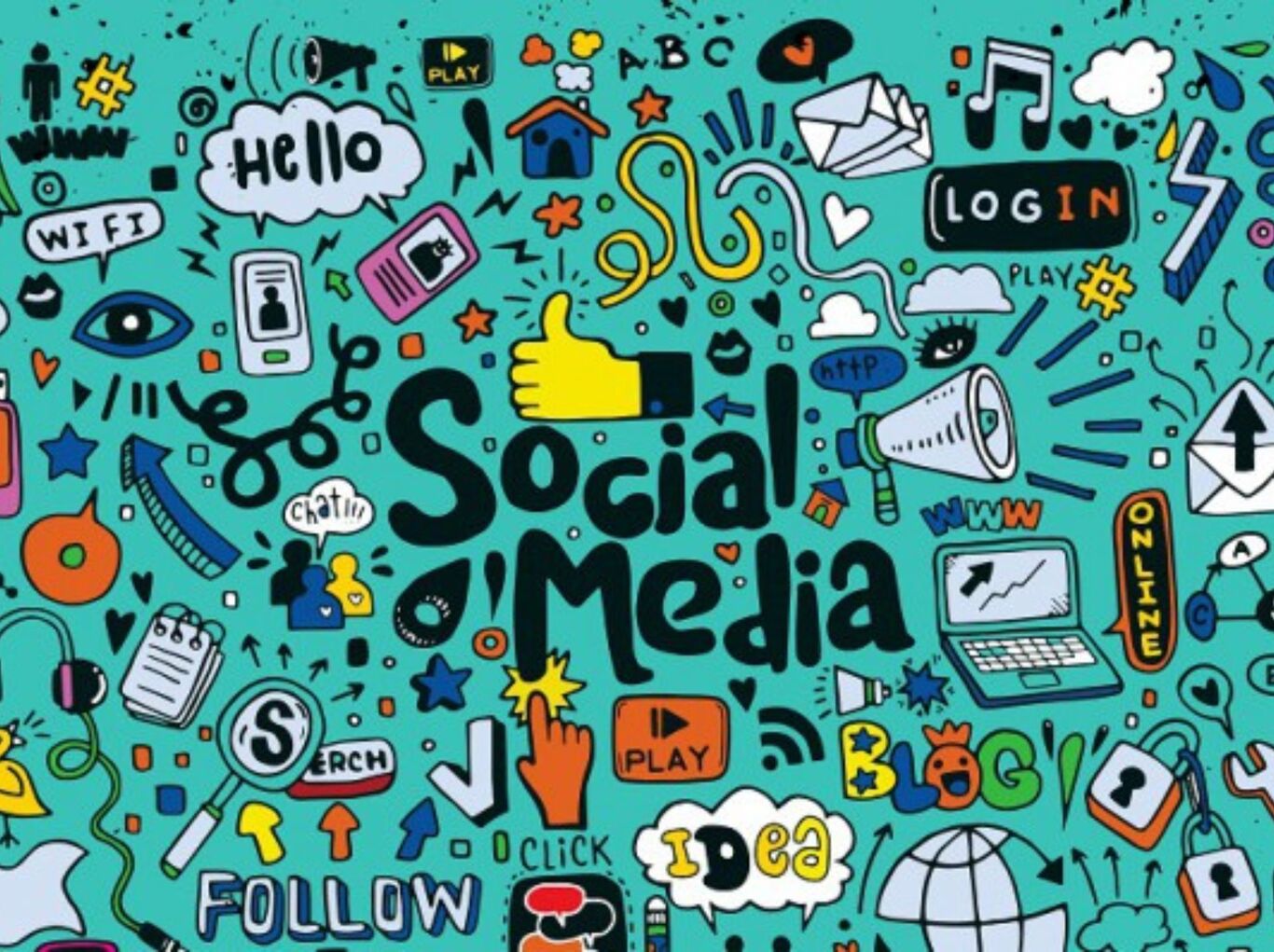The Proven LinkedIn Lead Generation System That Actually Converts in 2025

Here's the truth about LinkedIn lead generation in 2025: 4 out of 5 B2B leads from social media come from LinkedIn. Yet most companies treat it like a glorified resume database.
That's leaving serious money on the table.
LinkedIn generates 277% more leads than Facebook and Twitter combined, whilst LinkedIn Lead Gen Forms achieve a 13% conversion rate. This is more than five times the industry average.
The platform received over 1.47 billion site visits in July 2025 alone, with 85% of B2B marketers claiming it delivers the best value among all social media platforms.
The thing to keep in mind is that LinkedIn's algorithm underwent massive changes in 2025. The platform now prioritises authentic engagement, quality content, and meaningful interactions over quantity-based tactics.
This isn't your typical "send connection requests and hope for the best" guide. You're about to learn the exact system Fortune 500 companies use to generate consistent, high-quality LinkedIn leads in 2025.
Before we dive in, understand this: LinkedIn lead generation isn't about quick wins. It's about building a systematic approach that compounds over time.
Ready to transform LinkedIn from a networking afterthought into your most profitable lead generation channel? Let's get started.
Why LinkedIn leads the charge in B2B lead generation for 2025
The numbers tell an even more compelling story for enterprise decision makers.
Here's what changed the game: Over half (53%) of B2B marketers use LinkedIn[1] to identify prospects and source contact details. More importantly, two-fifths (40%) of active monthly users using LinkedIn explore it on a daily basis.
But it's not just about volume, it's about quality. 96% of B2B marketers use LinkedIn[2] for organic content distribution. In fact, over 40% of marketers generate business leads of high quality through LinkedIn.
The demographic advantage is staggering. Nearly half (47%) of LinkedIn users worldwide are 25 to 34 year olds - prime decision-making age for B2B purchases. These aren't passive browsers either: over three-quarters (78%) of users consume content on LinkedIn to keep up with industry news, while 73% use it to discover new ideas.
Why LinkedIn beats every other platform for B2B lead generation
1. Precision targeting meets buyer intent: LinkedIn's advanced targeting capabilities let you narrow down by job titles, industries, skills, company size, and more. Sales Navigator enables precise targeting of decision-makers, while InMail boasts response rates 3x higher than traditional email[3].
2. Algorithm changes favour authentic engagement: The platform's algorithm now rewards authentic engagement, quality content, and meaningful interactions over quantity-based tactics.
This creates massive opportunities for businesses that understand how to work with LinkedIn's 2025 updates rather than against them.
3. Professional context drives conversion: Over three-quarters of members use it to stay on top of industry news and discover fresh ideas means prospects are already in a business mindset when they engage with your content.
The bottom line: LinkedIn has evolved from a networking platform into a sophisticated lead generation engine. The question isn't whether you should be using LinkedIn for B2B lead generation, it's whether you're using it correctly.
5 key features on LinkedIn to boost your B2B lead gen strategy in 2025
Understanding how to generate leads on LinkedIn effectively requires mastering the platform's most powerful features.
Here are some of the top LinkedIn lead generation tools and features:
1. LinkedIn lead generation ads reach decision-makers precisely
LinkedIn lead generation advertising now includes Matched Audiences that let you upload CRM data for surgical retargeting.
This means you can run LinkedIn lead generation ads specifically to people who've visited your pricing page or downloaded your content.
LinkedIn's cost per lead through targeted advertising is 28% lower than Google Ads[4], making it one of the most cost-effective ways to generate business leads.
2. Native lead gen forms eliminate conversion friction
When exploring how to generate organic leads on LinkedIn, Lead Gen Forms are game-changers.
These forms achieve a 13% conversion rate[5], more than five times the industry average, because they auto-populate with LinkedIn profile data. This removes the biggest barrier in traditional lead generation: form completion friction.
For B2B LinkedIn lead generation, these forms have helped 90% of marketers reduce cost per lead significantly.
3. Sales Navigator powers advanced prospecting
This premium tool answers "what is a way to do lead generation" by providing real-time alerts about prospect activity.
When your saved leads get promoted, change companies, or announce funding, you're notified immediately. These trigger events create natural conversation starters for how to generate leads in sales.
4. Algorithm-driven content amplification
The 2025 LinkedIn algorithm prioritises authentic expertise and meaningful engagement.
Posts that generate thoughtful discussions receive exponentially more visibility than generic content. This creates an easy lead generation pathway through thought leadership.
5. Multi-format engagement multiplies reach
Live video content receives 24 times more engagement[6] than static posts, while carousel posts and LinkedIn documents keep users on-platform longer. Understanding how can I generate leads through content variety is crucial for LinkedIn lead generation at scale.
The strategic advantage
These LinkedIn hacks for lead generation work best when integrated. Optimised content drives profile visits, which converts through lead gen forms, enabling retargeting via Matched Audiences.
How to optimise your LinkedIn profile and company page for maximum impact
Your LinkedIn profile isn't just digital real estate - it's your most valuable sales asset. Yet a majority of profiles read like glorified CVs instead of lead magnets.
Here's what actually works in 2025:
Your headline needs to solve problems, not list job titles
Instead of "Marketing Director at XYZ Corp," try "Helping SaaS Companies Reduce CAC by 40% Through Revenue Operations."
The difference? The first tells me what you are. The second tells me what you can do for me.
Research backs this up: profiles with problem-solving headlines get 40% more views than generic job title headlines[7]. More importantly, they attract the right kind of attention from prospects looking for solutions.
Your About section should read like a case study, not a biography
Nobody cares where you went to university or your career journey. They care about outcomes.
Structure it like this:
- Opening hook: The biggest problem your ideal clients face
- Your approach: How you solve it differently
- Proof: Specific results you've delivered (with numbers)
- Call-to-action: What you want people to do next
Profile photos matter more than you think
Profiles with professional headshots receive 14 times more views and 36 times more likely to get a response.
But here's the kicker - the background matters too. A clean, branded background that hints at your industry performs better than generic office shots.
Company Pages need personality, not corporate speak
Most Company Pages sound like they were written by a committee of lawyers. The pages that generate leads feel human.
Share behind-the-scenes content, employee stories, and client successes. LinkedIn reports show companies with complete, regularly updated pages are 20% more likely to be discovered.
Keywords throughout, but naturally
Sprinkle relevant terms throughout your profile, but don't stuff them awkwardly. LinkedIn's search algorithm is sophisticated enough to understand context and synonyms.
The reality: Your profile optimisation directly impacts every other LinkedIn lead generation tactic you'll use. A poorly optimised profile kills conversion even if your content and outreach are brilliant.
Mastering the LinkedIn algorithm: 5 tips for increasing your organic reach in 2025
LinkedIn's algorithm underwent massive changes in 2025. Understanding these shifts is the difference between your content reaching 100 people or 10,000.
- Dwell time is the new engagement king: The algorithm now prioritises how long people spend looking at your post. Carousels, thought leadership posts, and videos that spark deeper engagement get exponentially more visibility than quick-scroll content.
- Meaningful interactions trump vanity metrics: The algorithm spots thoughtful comments versus emoji drops. Posts generating real discussions reach wider audiences. Just dropping "Great post!" won't help anyone's visibility.
- The golden hour matters more than ever: Posts getting strong interaction in the first 60 minutes now get shown to second- and third-degree connections more frequently. This compounds visibility dramatically.
- LinkedIn hates taking people off-platform: External links get deprioritised. Share insights natively, then drive conversations in comments rather than pushing traffic away immediately.
- Consistency beats perfection: LinkedIn rewards regular contributors over sporadic posters. Aim for 3-4 quality posts weekly rather than daily mediocre content.
Check out our list of top 10 tips that the best social media strategists follow
Which LinkedIn content formats drive B2B leads? Here's the winning formula
Not all LinkedIn content is created equal. After analysing thousands of B2B posts, certain formats consistently generate leads whilst others fall flat.
1. Video content dominates everything else
LinkedIn video posts receive 5x more engagement than static posts.
But here's what most miss: vertical videos perform 31% better than horizontal formats. Keep them under 2 minutes for maximum retention.
Try posting videos on a weekly or bi-weekly basis.
2. Carousel posts create engagement loops
These multi-slide posts generate 2x higher interaction rates than single images because they keep users swiping.
Perfect for breaking down complex topics into digestible insights.
You should include 1-2 value-adding carousels in your weekly strategy.
3. Document posts build authority fast
Upload PDFs, slide decks, or one-pagers directly to LinkedIn.
The algorithm favours these because they keep users on-platform longer. Plus, they're easily saved and shared.
4. Text-only posts still work when done right
Start with a hook, break up text with line breaks, and end with a question. The key is sparking conversation, not broadcasting announcements.
If you can pair it with a personal (but still professional) picture of yourself, it will go a long way. You can also use AI to generate social media posts and help grow your account.
5. Native LinkedIn articles for thought leadership
These longer-form pieces help establish expertise and often rank in Google searches. Perfect for complex topics that need more than a post allows.
Content mix strategy
40% educational insights, 30% behind-the-scenes/personal, 20% industry news commentary, 10% company updates.
This ratio keeps audiences engaged without feeling sold to constantly.
Post timing matters: Tuesday-Thursday between 9-11 AM and 1-3 PM sees highest engagement. But consistency trumps perfect timing every time.
How to run highly effective LinkedIn Ads for B2B lead gen
LinkedIn ads are expensive, but they work when done right. The platform's cost per lead is lower than Google Ads for B2B campaigns, proving precision targeting beats cheap clicks.
- Sponsored Content gets the best reach: These native ads blend into feeds naturally, achieving median CTRs around 0.52%. The secret is making them feel less like ads and more like valuable insights. Use thought leadership angles instead of direct sales pitches.
- Conversation Ads drive engagement: These interactive inbox messages let prospects choose their own path through your funnel. Average open rates hit 50% with 12% CTR - far better than email campaigns. Perfect for complex B2B sales cycles requiring nurturing.
- Message Ads for direct outreach: Skip the noise of feeds and land directly in inboxes. These work best for high-value, low-volume campaigns targeting specific decision-makers. Keep messages personal and valuable, not salesy.
- Target precisely, not broadly: Use job titles, company size, and industry filters aggressively. Broad targeting wastes budget. For more help crafting high-converting ads, check out our guide on running effective social media ads for comprehensive strategies.
- Bidding strategies matter: CPM works best for awareness campaigns, while CPC drives direct actions. Start with automated bidding, then optimise based on performance data.
- Creative testing is everything: Rotate ad creative every two weeks - LinkedIn ads lose effectiveness fast. Test different headlines, images, and CTAs constantly. Vertical creative gets 31% higher engagement than horizontal formats.
Use LinkedIn Sales Navigator to supercharge your outreach
Sales Navigator transforms LinkedIn from a networking platform into a prospecting powerhouse. The advanced search capabilities alone justify the investment for serious B2B teams.
Advanced search filters find hidden prospects
Standard LinkedIn search shows limited results.
Sales Navigator unlocks deeper filtering by company growth, technologies used, and hiring patterns. Use Boolean search techniques to combine multiple criteria effectively.
Smart Links track engagement
When you share documents or presentations, Smart Links show exactly who viewed them and for how long.
This gives you perfect timing for follow-up conversations. High engagement scores indicate genuine interest.
Real-time alerts create conversation starters
Get notified when saved prospects change jobs, get promoted, or their companies announce news.
These trigger events provide natural reasons to reach out without seeming pushy. Timing makes all the difference in response rates.
InMail gets 3x higher response rates than regular email
But personalisation is crucial. Generic messages kill response rates. Reference something specific from their profile or recent activity.
Once you've mastered Sales Navigator, enhance your outreach with our tips on optimising sales strategies for lead generation.
Lead Lists organise prospects systematically
Save interesting prospects to categorised lists for systematic follow-up. This prevents good leads from falling through cracks and enables coordinated account-based marketing efforts.
The ROI calculation is simple: if Sales Navigator helps you close one additional deal per quarter, it pays for itself many times over.
How to track LinkedIn lead gen success using analytics and attribution models
You can't optimise what you don't measure. LinkedIn provides solid analytics, but most marketers barely scratch the surface of what's possible.
You should use the Campaign Manager to track the basics. Monitor CPL (cost per lead), CTR, and engagement rates directly in LinkedIn's dashboard. Make sure you set up conversion tracking with LinkedIn's Insight Tag to see post-click behaviour on your website.
After that, use multi-touch attribution to get the best results. LinkedIn rarely converts on first touch. Use UTM parameters and tools like Google Analytics to track the complete customer journey. Most B2B leads touch multiple LinkedIn touchpoints before converting.
Connect your LinkedIn account to your CRM to track leads from LinkedIn ads and organic efforts. This proves LinkedIn's contribution to revenue, not just lead volume. Many leads generated through LinkedIn convert weeks or months later.
LinkedIn attribution is complex because B2B buying cycles are long. But proper tracking separates successful campaigns from budget waste.
Level up your LinkedIn lead gen with OttoPilot
Most LinkedIn campaigns operate in data silos, making optimisation reactive rather than proactive. OttoPilot changes this by connecting LinkedIn performance with your entire revenue funnel in real-time.
With OttoPilot, you can manage real-time campaign optimisation. Instead of waiting for weekly reports, it shows LinkedIn performance changes as they happen.
LinkedIn rarely works in isolation. Prospects often discover you through LinkedIn, then convert via email or direct website visits. OttoPilot tracks these complex customer journeys, showing LinkedIn's true revenue contribution.
OttoPilot is a sales acceleration platform that helps with predictive lead scoring. The tool analyses engagement patterns, demographic data, and behavioural signals to score lead quality automatically. This helps sales teams prioritise follow-up efforts effectively.
Get regular B2B leads through LinkedIn and use OttoPilot to accelerate your growth

Look, most people overcomplicate LinkedIn lead generation. They chase shiny tactics, jump between strategies, and wonder why nothing works consistently.
The reality is simpler: LinkedIn rewards businesses that show up consistently with valuable content, build genuine relationships, and measure what matters.
Companies generating 100+ leads monthly through LinkedIn aren't using secret hacks. They're just doing the basics properly while their competitors fumble around with automated connection requests.
Your profile needs to sell before you do. Your content needs to educate before it converts. Your outreach needs to help before it asks. Master these fundamentals, and LinkedIn becomes your most predictable lead source.
The integration of tools like OttoPilot with LinkedIn campaigns transforms reactive campaign management into proactive optimisation.
Rather than discovering performance issues through weekly reports, businesses can identify and address campaign problems within hours of occurrence. This real-time visibility into lead generation performance enables rapid testing and iteration that compounds results over time.
The businesses dominating B2B lead generation on LinkedIn in 2025 treat it like the professional sales tool it is, not a social media afterthought.
FAQs on LinkedIn lead generation
How much should I spend on LinkedIn lead generation ads to see results?
Start with ₹75,000-1,50,000 monthly for testing LinkedIn lead generation ads. Indian B2B companies typically see positive ROI with budgets around ₹1-2 lakh monthly. The key is focusing on precise targeting rather than broad reach, especially when targeting global prospects from India.
What are the best LinkedIn lead generation tools for startups with limited budgets?
Free options include LinkedIn's native search and basic messaging. For lead generation through LinkedIn at scale, Sales Navigator (₹6,000-7,000/month) provides excellent ROI.
SaaS companies often combine free organic tactics with targeted LinkedIn lead generation advertising for cost-effective results.
How can B2B companies generate business leads targeting international markets through LinkedIn?
Focus on industry-specific content in English, optimise profiles for global keywords, and use LinkedIn lead generation B2B targeting by company size and geography. Indian IT services firms successfully use this approach to generate leads from the US and European markets.
How to get leads for free on LinkedIn?
Consistent content posting (3-4 times weekly), engaging in relevant industry groups, and personalised connection requests work well. For how to generate organic leads on LinkedIn, focus on sharing insights about Indian market social media trends that interest global prospects.
How do companies track LinkedIn leads effectively?
Use UTM parameters for all LinkedIn content, integrate LinkedIn Lead Gen Forms with CRM systems, and track metrics like cost per lead. Most successful B2B companies see conversion timelines of 2-4 months for LinkedIn lead generation.
What are proven LinkedIn hacks for lead generation that work specifically in the Indian market?
- Share insights about doing business in India
- Leverage festivals and cultural events for engagement
- Showcase client success stories from Indian markets
- Use regional language expertise as a differentiator when targeting global prospects seeking Indian market entry
- Over half (53%) of B2B marketers use LinkedIn - Link ↑
- 96% of B2B marketers use LinkedIn - Link ↑
- InMail boasts response rates 3x higher than traditional email - Link ↑
- 28% lower than Google Ads - Link ↑
- forms achieve a 13% conversion rate - Link ↑
- 24 times more engagement - Link ↑
- get 40% more views than generic job title headlines - Link ↑








